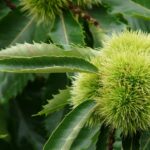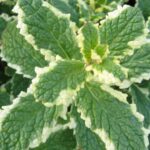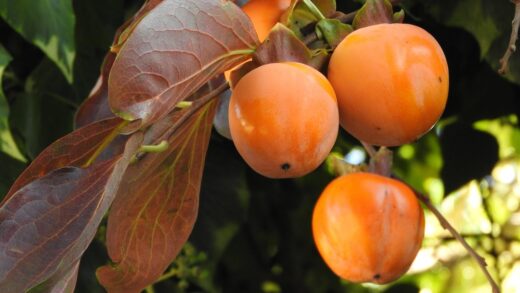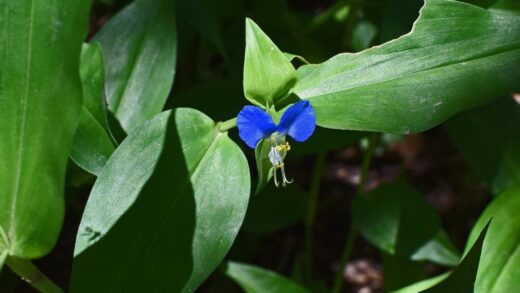Understanding and managing the water requirements of the Asian persimmon is a cornerstone of successful cultivation, directly influencing everything from tree vigor to fruit size and quality. Unlike many other fruit trees, the persimmon has a unique relationship with water, demonstrating considerable drought tolerance once established, yet responding dramatically to well-timed irrigation. Proper water management is a delicate balance; it requires providing sufficient moisture during critical growth stages without creating the waterlogged conditions that can lead to devastating root diseases. Mastering the art of irrigation is therefore essential for any grower aiming to produce a consistent, high-quality harvest of this exquisite fruit.
The life cycle of a persimmon tree dictates its fluctuating water needs throughout the year. The most critical periods for adequate moisture are during spring bud break, flowering, and fruit development from mid-summer through to harvest. Water stress during these key phases can lead to a host of problems, including poor fruit set, a significant increase in premature fruit drop, and the development of smaller, lower-quality fruits. Conversely, an overabundance of water, particularly in poorly drained soils, can suffocate the root system, leading to root rot, nutrient deficiencies, and a general decline in tree health.
Several external factors influence a persimmon tree’s specific water requirements, making a one-size-fits-all irrigation schedule impractical. Soil type is a primary determinant; sandy soils with low water-holding capacity will require more frequent watering than heavy clay soils that retain moisture for longer. Climatic conditions, including temperature, humidity, wind, and rainfall, also play a significant role. A hot, dry, and windy week will dramatically increase a tree’s rate of transpiration, necessitating more supplemental irrigation than a cool, calm, and humid period.
Therefore, effective irrigation management for Asian persimmons relies on observation and adaptation rather than a rigid calendar. The most reliable method for determining when to water is to directly assess the soil moisture. This can be done simply by feeling the soil a few centimeters below the surface or by using soil moisture monitoring tools. The goal is to maintain consistent moisture in the root zone, allowing the top layer of soil to dry out slightly between waterings. This approach ensures the tree receives the hydration it needs to thrive without the risks associated with over-saturation.
Understanding the water needs of persimmon trees
The water needs of an Asian persimmon tree are deeply connected to its physiological processes. Water acts as the primary transport medium within the tree, carrying essential nutrients from the roots up to the leaves and distributing the sugars produced during photosynthesis to all parts of the plant, including the developing fruit. It is also vital for maintaining turgor pressure in cells, which keeps the leaves and shoots firm and properly oriented for optimal sunlight absorption. A lack of sufficient water disrupts these fundamental processes, leading to stunted growth and reduced vitality.
More articles on this topic
The root system of the persimmon tree, which is responsible for water uptake, typically consists of a deep taproot and a network of shallower feeder roots. While the taproot helps the tree access deeper water sources and provides a degree of drought resistance, the majority of water and nutrient absorption occurs in the upper layer of the soil where the feeder roots are concentrated. Therefore, irrigation strategies should focus on thoroughly wetting this primary root zone, which generally extends out to the tree’s dripline and to a depth of about 30-50 centimeters.
Transpiration, the process by which water vapor is released from the leaves, is the main driver of water movement through the tree. Environmental factors such as high temperatures, low humidity, and wind increase the rate of transpiration, which in turn increases the tree’s demand for water from the soil. During hot summer months, a mature persimmon tree can transpire a significant volume of water each day. It is during these periods of high demand that supplemental irrigation becomes most critical to prevent water stress and its negative consequences on the fruit crop.
It is also important to recognize that the tree’s water requirements are not constant throughout the year. Demand is highest during the active growing season from spring through autumn when the tree is producing leaves, shoots, and fruit. In the late autumn and winter, when the tree is dormant, its water needs are drastically reduced. Watering during the dormant season is generally unnecessary unless there is a prolonged and severe winter drought, in which case a single deep watering may be beneficial to prevent root desiccation.
Irrigation during the establishment phase
The establishment phase, which encompasses the first one to two years after planting, is the most critical period for irrigation in a persimmon tree’s life. During this time, the young tree is working to extend its root system from the original root ball out into the surrounding native soil. Until this extensive root network is developed, the tree is highly vulnerable to drying out and experiencing transplant shock. Consistent and adequate watering during this phase is paramount for survival and for laying the groundwork for a vigorous, healthy tree.
More articles on this topic
A newly planted persimmon tree should be watered thoroughly immediately after being placed in the ground to settle the soil and eliminate air pockets around the roots. For the remainder of its first growing season, a regular watering schedule is essential. A deep watering once or twice per week is a good starting point, but the exact frequency should be adjusted based on weather conditions and soil type. The goal is to keep the entire root zone consistently moist to encourage continuous root growth and expansion.
The method of water application is also important for young trees. Applying water slowly and directly over the root ball ensures that it penetrates deeply rather than running off the surface. Drip irrigation or a soaker hose coiled around the base of the tree are excellent methods for efficient water delivery. Building a small soil berm or basin around the tree can also help to contain the water and allow it to soak in where it is needed most. This targeted approach prevents water waste and ensures the young roots have the moisture they need.
Monitoring the young tree and the surrounding soil is the best way to fine-tune your irrigation practices. Check the soil moisture regularly by digging down a few centimeters with your fingers or a trowel. If the soil feels dry at that depth, it is time to water. Pay close attention to the tree’s appearance; signs of water stress, such as wilting leaves that do not recover in the cooler evening hours, indicate that the tree is not receiving enough water. Adjusting the frequency and volume of irrigation based on these observations will give your young persimmon tree the best possible start.
Watering mature trees for optimal fruit production
Once a persimmon tree is mature and well-established, its deep root system makes it significantly more drought-tolerant than a young tree. However, for the purpose of producing a large crop of high-quality fruit, relying on natural rainfall alone is often insufficient, especially in regions with dry summers. Strategic irrigation during key developmental stages can have a profound impact on the final harvest. Without adequate water, the tree may conserve resources by dropping a large portion of its developing fruit, a phenomenon known as June drop.
The period from fruit set until harvest is the most critical time for irrigating mature, fruit-bearing trees. During this phase of rapid fruit growth and expansion, the tree’s water demand is at its peak. Consistent soil moisture is necessary for the fruit to swell to its full potential size. Drought stress during this period will almost certainly result in smaller fruit. Furthermore, severe fluctuations in soil moisture, such as a prolonged dry spell followed by a heavy downpour or irrigation, can cause the rapidly expanding fruit to split or crack on the tree.
A practical irrigation strategy for mature trees is to provide a deep and thorough watering every two to four weeks during the summer and early autumn, adjusting the frequency based on rainfall and temperature. The water should penetrate the soil to a depth of at least 30-50 centimeters to reach the majority of the active feeder roots. A slow application of water over a larger area, extending from near the trunk out to the dripline, is much more effective than a quick spray at the base of the tree. This ensures the entire root zone is evenly hydrated.
As harvest approaches, it is generally advisable to slightly reduce the amount of irrigation. This mild water stress can help to concentrate the sugars in the fruit, leading to a richer and more intense flavor. However, this should be done with caution, as excessive drying can cause premature fruit drop or negatively affect the fruit’s texture. After the harvest is complete and the leaves have begun to drop, supplemental irrigation can typically be discontinued until the start of the next growing season.
Signs of water stress
Recognizing the signs of water stress, both from too little and too much water, is a crucial skill for any persimmon grower. The most obvious and immediate sign of under-watering, or drought stress, is the wilting of leaves during the hottest part of the day. While some minor wilting on very hot days can be normal, leaves that remain droopy into the cooler evening or morning hours are a clear indication that the tree is in desperate need of water.
Prolonged drought stress will lead to more severe symptoms. The leaves may begin to turn yellow, starting with the older leaves, and their edges may become brown, dry, and curled, a condition known as leaf scorch. The tree’s growth will slow or stop, and it will likely begin to shed leaves and developing fruit as a survival mechanism to reduce water loss through transpiration. If these symptoms are observed, a deep and slow watering is needed immediately to begin rehydrating the root zone.
Paradoxically, the symptoms of over-watering can often mimic those of under-watering, which can be confusing. When a tree’s roots are in constantly saturated soil, they are deprived of oxygen, a condition called hypoxia. This lack of oxygen damages the roots and impairs their ability to absorb water and nutrients, leading to yellowing leaves (chlorosis), stunted growth, and wilting, even though the soil is wet. In severe cases, chronic over-watering will lead to root rot, which can ultimately kill the tree.
The key to distinguishing between the two conditions is to check the soil. If the tree is showing signs of stress and the soil is dry to the touch several centimeters down, under-watering is the culprit. If the tree is stressed but the soil is soggy, muddy, or has a sour smell, over-watering is the problem. In this case, irrigation should be stopped immediately, and steps should be taken to improve drainage. Correctly diagnosing the cause of water stress is the first and most important step toward remedying the situation.
Efficient irrigation systems and techniques
Employing efficient irrigation systems and techniques not only conserves a precious resource but also promotes a healthier growing environment for the persimmon tree. The most effective methods are those that deliver water directly to the root zone with minimal loss to evaporation or runoff. Drip irrigation is one of the most efficient systems available for this purpose. It uses a network of tubes and emitters to release water slowly and precisely at the base of the tree, ensuring deep penetration and minimizing water waste.
Soaker hoses are another excellent and cost-effective option for efficient irrigation. These porous hoses are laid out in a circle around the tree’s dripline and “weep” water along their entire length. This provides a slow, gentle, and deep soaking that is ideal for trees. Like drip systems, soaker hoses reduce the risk of fungal diseases by keeping the foliage dry, as the water is applied directly to the soil surface. This is a significant advantage over overhead sprinklers, which can wet the leaves and create favorable conditions for pathogens.
Mulching is a simple yet profoundly effective technique that is an essential component of any efficient irrigation strategy. Applying a 5-10 centimeter layer of organic mulch, such as wood chips, straw, or compost, over the root zone of the tree provides numerous benefits. The mulch acts as a barrier, significantly reducing the amount of water lost to evaporation from the soil surface. It also suppresses weed growth, moderates soil temperature, and gradually improves soil structure and fertility as it decomposes.
Ultimately, the most efficient irrigation practice is to water based on the tree’s actual needs rather than a fixed schedule. This requires regular monitoring of both the weather and the soil moisture. Investing in a simple soil moisture meter or learning to gauge moisture by feel can save a great deal of water and prevent the problems associated with both under- and over-watering. By combining appropriate technology like drip irrigation with sound horticultural practices like mulching and monitoring, you can create a water-wise system that supports a thriving and productive persimmon tree.




















